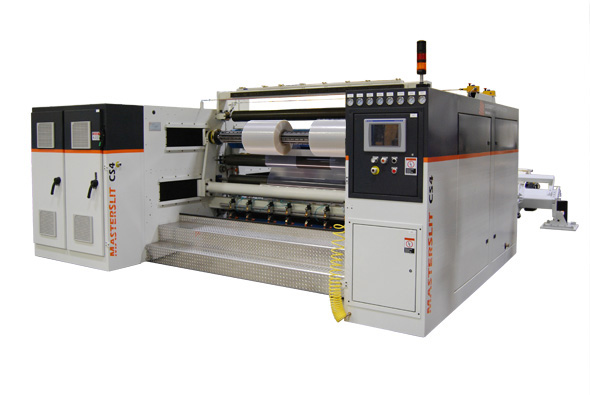

September 14 2022

 When faced with the decision of what slitter rewinder to consider to process the growing variety of materials used today, the center surface slitter rew inder is the go-to choice. This type of machine, often considered the Swiss army knife of slitters, has the ability to wind in multiple modes to achieve the desired wound roll quality on materials with very different physical properties, such as: paper, film, nonwovens and foam. Since many converting operations must change out the material based on production demands, a single machine that can handle the majority of these materials is often seen as an economical solution.
When faced with the decision of what slitter rewinder to consider to process the growing variety of materials used today, the center surface slitter rew inder is the go-to choice. This type of machine, often considered the Swiss army knife of slitters, has the ability to wind in multiple modes to achieve the desired wound roll quality on materials with very different physical properties, such as: paper, film, nonwovens and foam. Since many converting operations must change out the material based on production demands, a single machine that can handle the majority of these materials is often seen as an economical solution.
The winding configuration used on these machines is setup where the web after slitting is partially wrapped around a driven roller known as a winding drum. The slit webs are then secured alternately to cores located on winding shafts that are mounted between two sets of rewind arm assemblies positioned at the front and rear of the drum. Depending on which winding mode is selected, the machine can operate in its simplest form to process less sensitive webs, to its most capable manner to handle webs that are very challenging to wind. A summary of the various winding modes is provided below.
Center Mode – In center mode the winding force is derived solely from the rewind shafts and is transmitted to the winding web through the core and layers of material that have already been rewound. This mode is often used with materials where contact pressure cannot be applied, such as laminates, pressure sensitive tape, and extensible film.
Center Winding in Minimum Gap Mode – This mode uses a center winding method as described above, but positions the winding packages in close proximity to, but not touching, the winding drum. As the winding diameter increases this small gap is maintained by moving the winding shafts away from the drum in a programmed manner. This mode is very effective in processing materials that may be prone to wrinkling when carried across a large span due to the small web span that is maintained regardless of wound diameter, especially any thin material such as stretch film.
Center Surface Mode – In this mode the winding packages are nipped against the winding drum and the roll formation is affected by both the torque being transmitted to the winding shaft and the nip being applied against the drum. The ratio of these two forces can be adjusted, depending on the properties of the material being processed, to produce the desired winding results. This mode is most often used to produce large-diameter rolls of both extensible or non-extensible materials that are not overly sensitive to being nipped or compressed, such as paper, many nonwovens, textiles, and specialty composites.
Center Winding with Individual Top-Riding Rolls – When processing webs at high speeds, air is entrapped between the incoming web and the surface of the roll, which acts like a lubricant and can cause the wound layers to shift and lead to winding defects. A top-riding or lay-on rolls can prevent this by squeezing out the air before it is trapped within the roll. However, not very many webs have a uniform enough cross section to allow all winding packages to evenly contact a full width top-riding roll and produce consistent wound rolls. This optional mode of operation includes individual air loaded top-riding rolls that contact each wound package and accommodate slight differences in diameter to produce rolls of uniform quality.
The versatility that a center surface machine provides, with its various modes of operation to wind materials with different characteristics, can be an ideal solution to convert a wide variety of materials. However, there could be some materials with process requirements that fall outside of the intended operating limits of a given machine. Be sure to consult with the machine manufacturer and include specifications for all of the materials that will be converted using this type of machine.